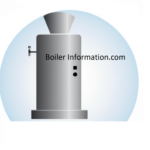Industrial boilers are a critical component of many industrial processes. They provide the heat necessary to create steam and other hot gases, which can then be used to power machinery or generate electricity. Boilers have been around since the early 19th century when they were first developed for use in locomotives and ships. Since then, their design has evolved significantly with advances in technology allowing them to become more efficient and reliable sources of energy production today.
The basic components of an industrial boiler include a furnace chamber where fuel is burned, tubes that carry water through the system so it can be heated by combustion gases from the burning fuel, pipes that connect all parts together as well as valves for controlling temperature levels within each section of piping. Heat generated from this process is transferred into water stored inside a pressure vessel creating high-pressure steam which can reach temperatures up to 1000°F (538°C). This superheated steam is typically used for powering turbines or driving pumps in various applications such as food processing plants or paper mills among others depending on its intended purpose at any given time .
Modern boilers are designed with safety features like automatic shutoff systems if certain conditions aren’t met such as low water levels meaning these devices don’t need constant monitoring like older models did making them much safer overall while also being able to produce higher amounts of energy than before thanks largely due advancements made over recent decades including computerized controls enabling better control over parameters like temperature settings etcetera leading us into what we now consider standard practice when dealing with most modern day industrial boiler operations today .
